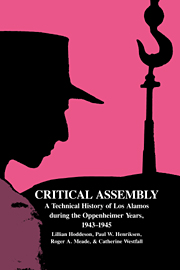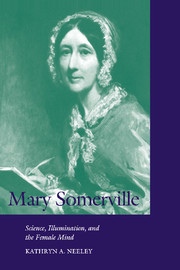Refine search
Actions for selected content:
13588 results in History of science and technology
SECTION V - THE SPIRITUALITY OF MEASURE
-
- Book:
- The Archaeology of Measurement
- Published online:
- 05 June 2012
- Print publication:
- 19 April 2010, pp 245-246
-
- Chapter
- Export citation
7 - Measuring by weight in the Late Bronze Age Aegean: The people behind the measuring tools
-
-
- Book:
- The Archaeology of Measurement
- Published online:
- 05 June 2012
- Print publication:
- 19 April 2010, pp 71-87
-
- Chapter
- Export citation
17 - Measuring time, sacred space, and social place in the Inca Empire
-
-
- Book:
- The Archaeology of Measurement
- Published online:
- 05 June 2012
- Print publication:
- 19 April 2010, pp 216-228
-
- Chapter
- Export citation
5 - Numerical cognition and the development of ‘zero’ in Mesoamerica
-
-
- Book:
- The Archaeology of Measurement
- Published online:
- 05 June 2012
- Print publication:
- 19 April 2010, pp 43-53
-
- Chapter
- Export citation
16 - The measure of time in Mesoamerica: From Teotihuacan to the Maya
-
-
- Book:
- The Archaeology of Measurement
- Published online:
- 05 June 2012
- Print publication:
- 19 April 2010, pp 203-215
-
- Chapter
- Export citation
10 - Architectural measurements in the Indus cities: The case study of Mohenjo-Daro
-
-
- Book:
- The Archaeology of Measurement
- Published online:
- 05 June 2012
- Print publication:
- 19 April 2010, pp 125-129
-
- Chapter
- Export citation
18 - Measuring time in the European Neolithic? The function and meaning of Central European circular enclosures
-
-
- Book:
- The Archaeology of Measurement
- Published online:
- 05 June 2012
- Print publication:
- 19 April 2010, pp 229-244
-
- Chapter
- Export citation
1 - Conceptualising quantification before settlement: Activities and issues underlying the conception and use of measurement
-
-
- Book:
- The Archaeology of Measurement
- Published online:
- 05 June 2012
- Print publication:
- 19 April 2010, pp 7-18
-
- Chapter
- Export citation
SECTION IV - CALENDAR AND COSMOLOGY
-
- Book:
- The Archaeology of Measurement
- Published online:
- 05 June 2012
- Print publication:
- 19 April 2010, pp 181-182
-
- Chapter
- Export citation
Frontmatter
-
- Book:
- The Archaeology of Measurement
- Published online:
- 05 June 2012
- Print publication:
- 19 April 2010, pp i-iv
-
- Chapter
- Export citation
Contents
-
- Book:
- The Archaeology of Measurement
- Published online:
- 05 June 2012
- Print publication:
- 19 April 2010, pp v-vi
-
- Chapter
- Export citation
13 - Establishing direction in early Egyptian burials and monumental architecture: Measurement and the spatial link with the ‘other’
-
-
- Book:
- The Archaeology of Measurement
- Published online:
- 05 June 2012
- Print publication:
- 19 April 2010, pp 170-180
-
- Chapter
- Export citation
SECTION II - MATERIALISING THE ECONOMY
-
- Book:
- The Archaeology of Measurement
- Published online:
- 05 June 2012
- Print publication:
- 19 April 2010, pp 69-70
-
- Chapter
- Export citation
Introduction: Measure: Towards the construction of our world
-
-
- Book:
- The Archaeology of Measurement
- Published online:
- 05 June 2012
- Print publication:
- 19 April 2010, pp 1-4
-
- Chapter
- Export citation
6 - Recording measure(ment)s in the Inka khipu
-
-
- Book:
- The Archaeology of Measurement
- Published online:
- 05 June 2012
- Print publication:
- 19 April 2010, pp 54-68
-
- Chapter
- Export citation
3 - The token system of the ancient Near East: Its role in counting, writing, the economy and cognition
-
-
- Book:
- The Archaeology of Measurement
- Published online:
- 05 June 2012
- Print publication:
- 19 April 2010, pp 27-34
-
- Chapter
- Export citation
List of figures and tables
-
- Book:
- The Archaeology of Measurement
- Published online:
- 05 June 2012
- Print publication:
- 19 April 2010, pp vii-xii
-
- Chapter
- Export citation

Critical Assembly
- A Technical History of Los Alamos during the Oppenheimer Years, 1943–1945
-
- Published online:
- 31 March 2010
- Print publication:
- 28 May 1993

Mary Somerville
- Science, Illumination, and the Female Mind
-
- Published online:
- 30 March 2010
- Print publication:
- 22 October 2001

The Professionalization of Psychology in Nazi Germany
-
- Published online:
- 30 March 2010
- Print publication:
- 30 October 1992
